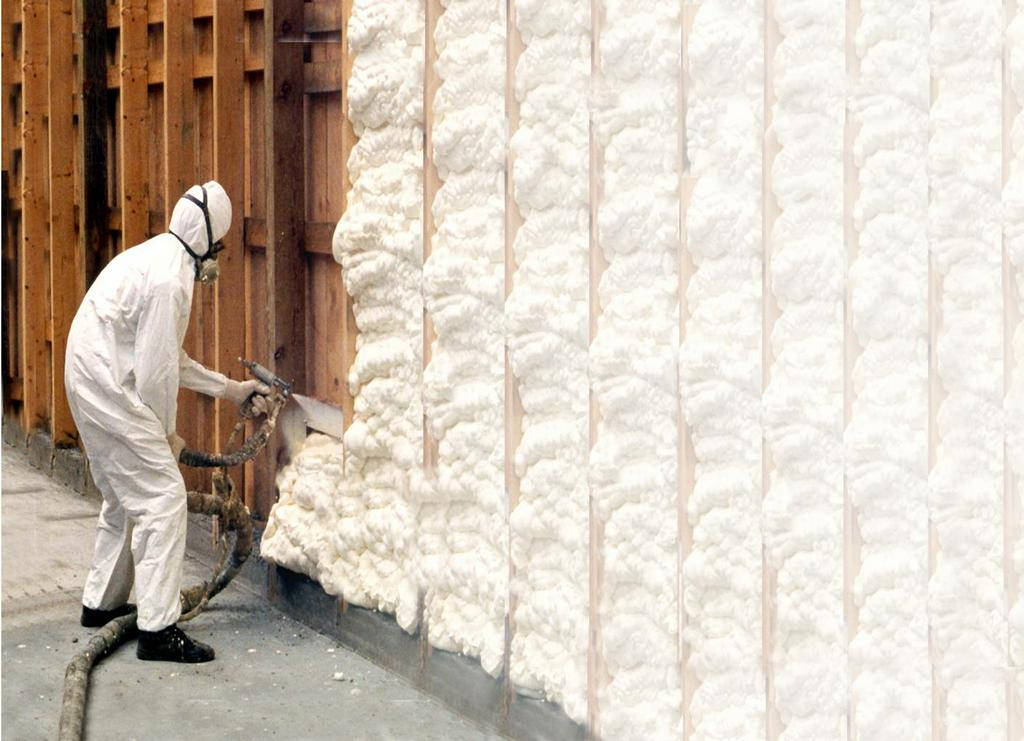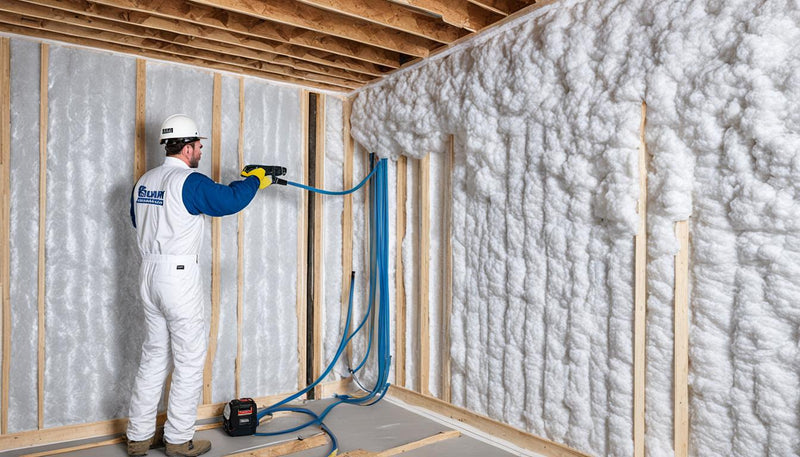Common Misconceptions About Spray Foam: Debunking the Misconceptions
Common Misconceptions About Spray Foam: Debunking the Misconceptions
Blog Article
Spray Foam: The Ultimate Solution for Air Sealing and Insulation
Spray foam insulation has actually emerged as a leading option for efficient air sealing and thermal insulation, providing a special mix of residential or commercial properties that establish it apart from traditional approaches. Comprehending the complete scope of its benefits, setup procedures, and contrasts with other insulation types is essential for making educated decisions.
What Is Spray Foam?
Spray foam is a functional insulation product that integrates the principles of air securing and thermal resistance to boost energy performance in buildings. Made up largely of polyurethane or other similar substances, spray foam is used as a fluid that expands upon contact with surfaces, producing a strong, continuous layer of insulation. This unique residential or commercial property allows it to fill up voids, fractures, and voids that conventional insulation products may overlook, giving a premium air seal.
There are two main sorts of spray foam: open-cell and closed-cell. Open-cell spray foam is lighter and extra versatile, supplying superb noise absorption and a reduced R-value per inch - Spray Foam. In comparison, closed-cell spray foam is denser, giving a greater R-value, moisture resistance, and added structural stability to building elements
The application process normally entails customized equipment, guaranteeing a smooth application that complies with different substrates, consisting of timber, concrete, and steel. This versatility makes spray foam suitable for both brand-new buildings and retrofitting existing frameworks. Its ability to develop a closed obstacle considerably adds to reducing energy consumption and improving interior air high quality, consequently making it a recommended choice amongst contractors and homeowners alike.
Benefits of Spray Foam Insulation
One of one of the most significant advantages of spray foam insulation is its outstanding capacity to create a constant air barrier, which successfully lessens energy loss. Unlike typical insulation products, spray foam expands to load spaces and cracks, making sure that air leakage is considerably minimized. This characteristic not just boosts energy performance yet also brings about lower utility bills in time.
Additionally, spray foam insulation gives premium thermal resistance, adding to a more stable interior setting. Its high R-value per inch enables for efficient insulation in restricted spaces, making it excellent for attic rooms, walls, and crawl rooms. The moisture-resistant residential properties of spray foam help stop mold and mildew and mildew growth, promoting healthier living conditions.
One more vital benefit of spray foam insulation is its sound-dampening qualities (Spray Foam). It efficiently decreases sound transmission in between areas, creating a quieter and more comfy home setting. The longevity of spray foam likewise sticks out, as it does not sag or work out over time, preserving its performance throughout its life-span
How Spray Foam Functions
Understanding how spray foam insulation works is necessary for valuing its effectiveness in air sealing and thermal resistance. Spray foam insulation includes 2 main components: isocyanate and polyol material. When these elements are mixed, they go through a chain reaction that causes the material to increase rapidly, developing a thick foam that fills fractures, spaces, and tooth cavities.
As the foam expands, it follows surfaces, forming an here impermeable seal that significantly lowers air infiltration. This particular makes spray foam insulation highly reliable at avoiding drafts and wetness penetration, which can lead to power loss and damages in time. Additionally, the closed-cell version of spray foam offers premium thermal resistance due to its stiff structure, efficiently lessening warm transfer.
The unique residential properties of spray foam allow it to adapt to uneven surface areas, guaranteeing extensive coverage and a smooth barrier. Therefore, spray foam insulation not only enhances energy effectiveness but additionally contributes to boosted indoor air high quality by lowering the buildup of irritants and pollutants. Eventually, understanding the mechanics behind spray foam underscores its duty as a remarkable option for insulation and air securing in both industrial and household applications.
Installation Process Summary

Before installment, the space should be adequately cleansed and prepped, making certain that surfaces are cost-free from wetness, debris, and dirt. This action is crucial since pollutants can endanger adhesion and total efficiency. When the location is prepared, the application involves blending the two elements of the spray foam, which increases upon contact and fills gaps successfully.
Trained professionals need to perform the installment, using specific equipment to guarantee consistent protection and optimal density. Safety safety measures, including wearing safety gear and making sure correct ventilation, are important throughout this procedure. After application, the foam generally cures rapidly, developing a strong barrier that enhances energy efficiency.
Contrasting Spray Foam to Typical Insulation
When assessing insulation choices, spray foam insulation stands apart in contrast to conventional materials such as fiberglass and cellulose. One of the key advantages of spray foam is its exceptional air securing abilities. Unlike fiberglass and cellulose, which can allow air infiltration, spray foam increases upon application, loading voids and crevices to develop an airtight seal. This leads to enhanced power efficiency, as less warmed or cooled down air runs away the home, causing reduced utility bills.
Furthermore, spray foam supplies a higher R-value per inch than conventional insulation types, supplying more effective thermal resistance in a thinner profile. This characteristic is particularly valuable in rooms with limited tooth cavity deepness. Spray foam is resistant to wetness and mold and mildew development, which can be a considerable concern with cellulose and fiberglass, particularly in damp settings.
Nonetheless, spray foam insulation usually brings a greater upfront cost than its typical equivalents. Property owners need to consider this preliminary investment versus lasting energy cost savings and efficiency advantages. Ultimately, while both insulation types serve their objective, spray foam arises as an advanced remedy for contemporary insulation demands, especially in terms of air sealing and thermal effectiveness.

Conclusion
In recap, spray foam insulation represents a very efficient remedy for attaining optimal air securing and thermal resistance. Its distinct homes, including wetness resistance and site web audio dampening, make it ideal for numerous applications in both brand-new constructions and retrofitting jobs (Spray Foam). Although the site web preliminary costs might be higher contrasted to standard insulation materials, the lasting advantages, such as significant energy savings and boosted indoor air high quality, justify the investment and highlight its worth in contemporary structure practices.
Spray foam insulation has actually emerged as a leading service for reliable air securing and thermal insulation, offering a special combination of homes that set it apart from typical methods.Spray foam is a functional insulation material that incorporates the principles of air securing and thermal resistance to boost energy efficiency in buildings.When reviewing insulation alternatives, spray foam insulation stands out in contrast to traditional materials such as fiberglass and cellulose. Inevitably, while both insulation kinds serve their function, spray foam arises as an extra sophisticated remedy for contemporary insulation needs, especially in terms of air securing and thermal performance.
In recap, spray foam insulation stands for a highly efficient service for attaining optimal air securing and thermal resistance.
Report this page